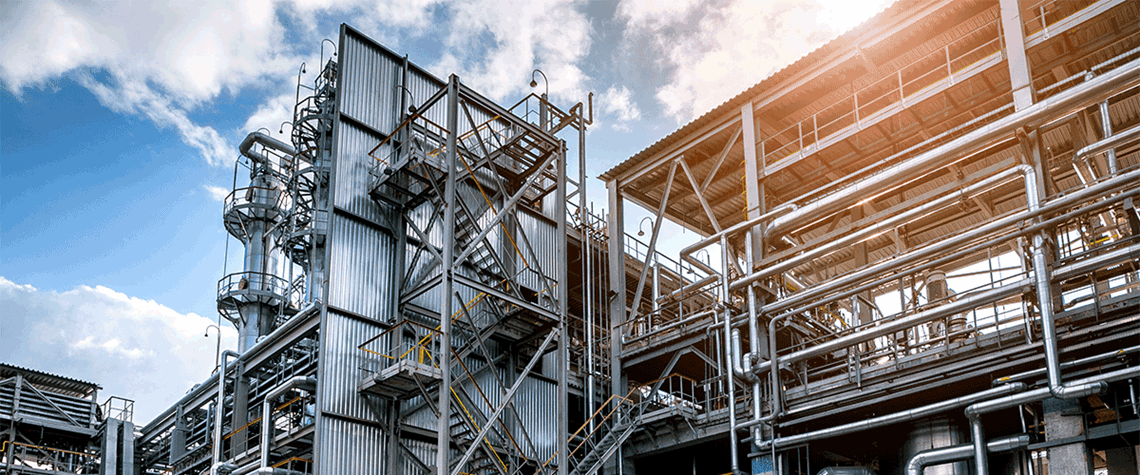The chemicals industry generates $4.7tn in revenue annually, representing around 4pc of global GDP, and directly employs more than 15mn people. Products from the chemicals industry underpin our way of life, health and prosperity and our transition to a net-zero-emission economy. They are present in the healthcare, packaging, agriculture, textiles, automotive, construction and virtually any industrial or manufacturing sector—in fact 96pc of manufactured goods depend on their use.
The chemicals industry also accounts for around 4pc of global greenhouse gas emissions today. Beyond climate impacts, the leakage of chemicals and downstream products such as plastics and fertilisers into the environment has a range of other adverse impacts on the nine identified planetary processes that regulate the stability and resilience of the Earth system, also referred to as planetary boundaries. While the vast majority of the carbon sourced for chemicals is fossil by nature, renewable carbon sources are limited, with further consequences on biodiversity and land use. In addition, legislation and downstream customer industries such as food and textiles are pushing for a transition to circularity and climate-neutral end-consumer products.
But the chemicals industry’s transition is lagging. In fact, it is considered the hardest-to-abate sector for a variety of reasons, including long asset lifetimes, tens of thousands of products with embedded carbon and a complex range of production technologies. Nevertheless, unless the chemicals system transitions to a sustainable model of operation, it will be challenging for a global economy fuelled by chemical products to be truly sustainable.
Planet Positive Chemicals, a landmark report released by Systemiq, the system change company, and the Center for Global Commons at the University of Tokyo shows that the chemicals industry must end its fossil dependence and become a planet-positive force by embracing a more circular, low-emission operating model. The industry can reinvent itself as a climate solution—becoming carbon-negative by early 2040s and acting as a carbon sink by 2050.
Supply and demand
Getting to true net-zero emissions across scopes one, two and three will require combined efforts on both the demand and supply side. Today, the global chemicals value chain is predominantly linear, with low reuse and recycling rates and significant waste generation. For example, up to 70pc of nitrogen input in fertilisers is not taken up by crops and only 9–14pc of plastic ever created has been recycled. Applying circular economy approaches to its current linear value chain can reduce total demand in the system by around 400mn t versus business-as-usual without sacrificing any functional benefit or utility. Tremendous business opportunities are awaiting companies able to align their portfolio with a circular net-zero world. Society will inexorably move towards a circular economy given it is the cheapest, greenest and safest way to proceed.
The chemicals system transition also requires a supply-side shift away from fossil-based inputs for feedstock and energy towards inputs that are based on alternative forms of carbon (biogenic, atmospheric and point source CO₂ and solid waste), green hydrogen and renewable energy. There is no silver bullet technology solution for the transition, but a combination of the abatement of production emissions (scope one and two), the embedding of climate-neutral carbon feedstocks (scope three, upstream) and the capturing of end-of life emissions at incinerators (scope three, downstream) will be critical.
All of the above demand- and supply-side interventions can get us to a planet-positive future by mid-century, where more than 80pc of carbon used by the industry is from non-fossil sources. The industry could create 500mn t of negative emissions while also growing by two-and-a-half times as it enables the abatement of other industries—largely ammonia for shipping and methanol as a new carbon feedstock. This transition also creates 29mn new jobs globally and economic development opportunities for the Global South due to its abundant and affordable renewable energy sources.
This system transformation requires coordinated action from the chemicals industry and companies in its upstream and downstream value chains, the energy system, innovators and governments. This may include establishing a first-movers demand coalition to guarantee a market for low-emission chemicals through offtake agreements. Such a coalition can also demand mandatory recycled content regulations and call for more stringent end-of-life recycling and CO₂ emission reductions as part of extended producer responsibility obligations.
Brands and retailers will be instrumental in driving the implementation of circular economy approaches for plastics, such as elimination and reuse models. Downstream collection and sorting of plastics must be optimised, mechanical and chemical recycling infrastructure must be expanded, and end-of-life incineration facilities must be upgraded to include CO₂ capture. We already see some of these movements happening, for example at the port of Rotterdam, in Houston’s industrial cluster and in recent large-scale chemical recycling investments in France.
The Planet Positive Chemicals report aims to help the industry and policymakers unite around a common view of the path ahead and accelerate the transition to a sustainable model of operation. Along this journey toward a new chemicals industry lies the potential for the industry to act as a carbon sink or a carbon management vehicle. This is a once-in-a-century opportunity, and the industry cannot afford to miss it. In essence, the vision for a 2050 chemicals industry requires investment and innovation today, or the sector risks rapidly following an irreversible business-as-usual trajectory.
Andreas Wagner is an associate at the system change company, Systemiq.
This article is part of our special Outlook 2023 report, which features predictions and expectations from the energy industry on key trends in the year ahead. Click here to read the full report.








Comments